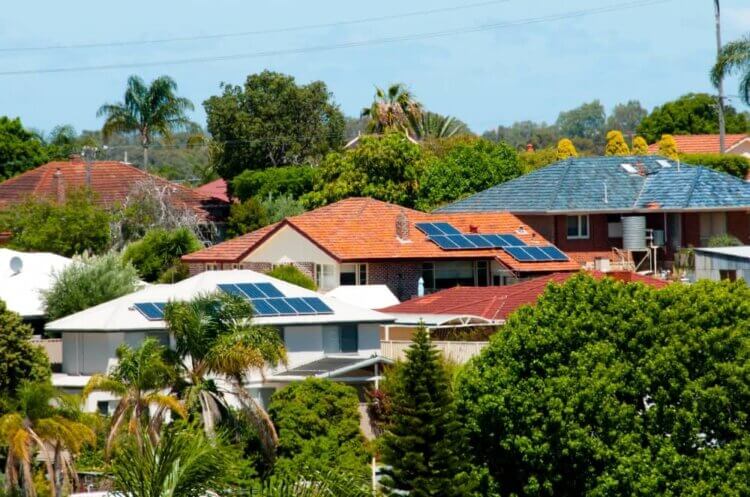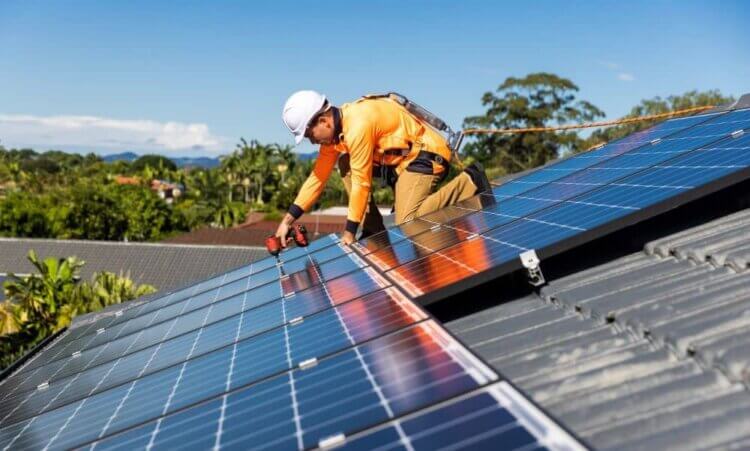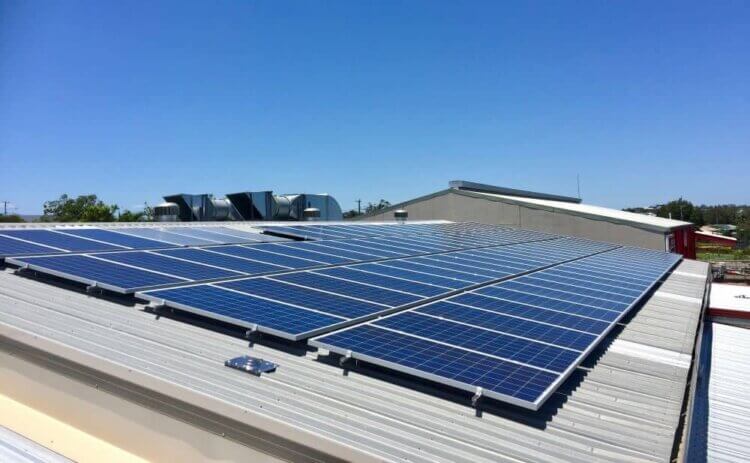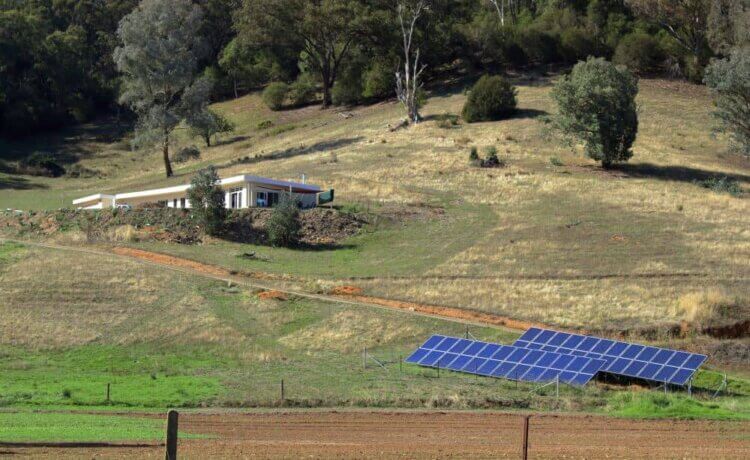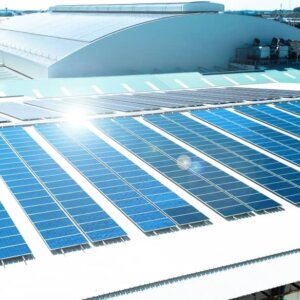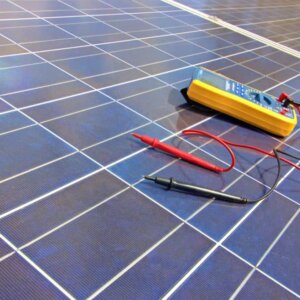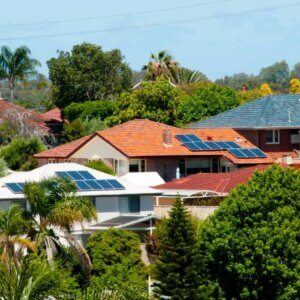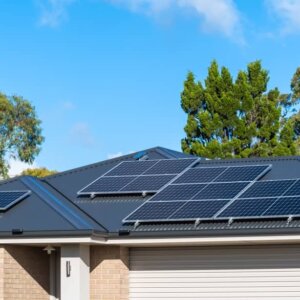Between the increase in electricity prices and Australia’s abundant sunshine, a growing number of homeowners are interested in the clean, free energy offered by solar panels.
If you are curious about switching to solar energy, our 2023 Solar Power Buying Guide will cover everything you need to know about solar energy, including:
- The benefits of solar energy
- How solar panels work
- The parts of a solar system
- How to determine your energy consumption
- On-grid solar vs off-grid solar
- Solar panel incentives and rebates in Australia
- The cost of a solar power system
What Are the Benefits of Solar Power?
Both residential and commercial solar panels offer significant advantages.
Benefits of solar energy include:
- Save Money — One of the biggest benefits of solar energy is the cost savings in the long run. After the initial investment, monthly energy bills are reduced and home or business owners can enjoy renewable, clean energy.
- Reduce Your Carbon Footprint — The clean energy generated by solar panels is renewable, creates zero emissions, and helps save water.
- Low Maintenance — After the installation, minimal effort is needed to care for solar panels.
- Store and Sell Excess Power — Solar systems equipped with batteries allow users to store extra power to be used at night or be sold back to the grid for cash.
- Independence — Storing excess power allows home or business owners to decrease their reliance on the electrical grid.
- Increase the Value of Your Home — A quality solar system can add significant value to your home should you ever decide to sell it.
- Longevity — Quality solar panels can last 20 to 25 years or more with the proper maintenance and conditions.
How On-Grid Solar Energy Works
On-grid solar uses solar energy to power your home during daylight hours. Without a battery, on-grid solar can only power your home during sunny hours.
While on-grid solar makes you less reliant on an energy supplier, you still need to maintain a connection to the electric grid. This connection to the electric grid will allow you to get the power you need at night or times your solar panels aren’t producing energy.
On-grid solar systems come with a feed-in tariff, meaning you can sell excess energy back to your energy provider.
How Do Solar Panels Work?
When the sun’s rays hit a solar panel, the individual solar cells capture the sun’s energy and convert it into DC (direct current) electricity. This DC electricity is then converted by the inverter into AC (alternate current) energy that can be used to power your home.
For a detailed look at solar energy, check out our blog post on how solar panels work.
What Are the Parts of a Solar Power System?
The typical Australian setup refers to a solar photovoltaic (PV) system that works by capturing solar energy and converting it into the type of energy you can use in your home.
The main components of a solar PV system include:
- The Panels — Solar panels can be monocrystalline or polycrystalline. Both types are suitable for the conditions in Australia, but the quality depends on the manufacturer. The panels get installed, usually on the roof, and capture the sun’s rays that will be converted into energy for your home. Since the panels are subjected to the harsh Australian climate, a quality solar panel is important if you want a product with a long lifespan.
- The Inverter — The solar inverter is responsible for turning the DC energy captured by the solar panels into the type of energy your home can use — 240V AC electricity. There are several types of inverters — string inverters, microinverters, and power optimisers — that can be installed with your solar system according to your needs. A solar technician will help you decide which inverter will be most efficient for your location, energy needs, and set-up.
- The Mounting — The mounting brackets securely attach the solar panels to the roof. A local installer who understands the weather conditions in Australia will be able to recommend the best mounting system for your residence or business.
How To Figure Out Your Energy Consumption
Energy is measured in kWh. On average, a typical home uses between 16 to 20 kWh daily. An easy way to determine your energy consumption is by checking your electrical bills.
Energy consumption varies based on the time of year, so it is often helpful to add up all your bills for the year and divide that amount by 12 to get a monthly average. You may also want to make a note of the months you used the most energy consumption and which months were low-use.
You’ll also want to determine when you use the most power. While you can sell unused solar energy, energy typically costs more than the rate you’ll be paid for any excess energy. This makes it more efficient to use as much of the energy you generate as possible.
Do you work from home or run appliances throughout the day? Or do you typically use more energy in the early evening hours? Take a look at your routine and consider recording your typical energy usage. Your peak energy use times will help determine which solar system will make the most sense for your wallet, property, and energy needs.
If you are unsure about how much energy you use, we can help. At Powertex Advantage, we can analyse the exact energy needs of your home or business to ensure we determine the most efficient system for your needs.
What Size Solar System Do You Need?
With a drop in the price of solar system installation over the last few years, it is easier than ever to afford the appropriate number of solar panels for your home or business.
It is better to install more panels than needed versus falling short. Once you determine your kWh usage, you will have a solid understanding of what size solar system you need.
The number of panels you install and the inverter are often referenced in kW. We recommend installing a higher number of panels than your inverter rating (i.e. 6.6kW for a 5kW inverter) to get more power during mornings, nights, and colder months and to qualify for a better solar rebate.
How to Maximise Energy with The Right Solar Panel Direction
Installing solar panels in the right direction will maximise energy production. How your solar panels are installed will largely depend on the structure of your roof.
A solar technician will help you figure out all the details, but here is a general look at how solar panel direction affects energy production:
- East-facing panels — These panels take advantage of east sunrises, generating the most energy in the morning hours.
- West-facing panels — With sunsets in the west, this solar panel direction will give you the most energy production in the afternoon hours.
- North-facing panels — North-facing solar panels in Australia will produce the most energy, with peak energy production occurring during the middle of the day.
The best solar panel direction will depend on your roof structure, your property, your location, and your energy consumption. If you are rarely home during the day, north-facing panels may not be ideal. Or, if you work from home and use most of your energy during midday, north-facing panels are likely your best option if your roof structure and orientation can accommodate them.
Whether you are interested in residential solar or commercial solar, our team can also help you determine the ideal angle, orientation, and set-up for your solar panels to maximise efficiency.
Understanding the Feed-In Tariff
The feed-in tariff refers to the amount your electricity supplier will pay for any excess energy you export back to the electrical grid. This rate will vary between different energy retailers and your location. It is important to shop around for the best feed-in tariff so you can maximise your return on investment.
What Are the Solar Incentives and Rebates in Australia?
Australia offers various government rebates when buying a new solar power system.
To be eligible for solar rebates through the Australian government, several requirements must be met. Most importantly, the installation of your residential solar power system must be completed by a CEC (Clean Energy Council) accredited installer and utilise materials that are Clean Energy Council-approved.
The new solar power system must also be less than 100kW. You may also receive a higher rebate if you have a higher number of solar panels than your inverter is rated for.
It is worth checking for any local rebates through your state. If you have any questions about government solar rebates, we’d be happy to talk with you and explain the different options you may be eligible for.
How Much Does a Solar Power System Save?
After the initial investment, your solar panels will generate renewable, free energy so you can enjoy minimal electric bills. The exact savings from your solar power system depends on factors such as:
- The size of the residential or commercial solar power system
- Electricity consumption
- Angle and orientation of the solar panels on the roof
- Size of the roof
- Hours of direct sunlight
- Local electricity rates
- Feed-in tariffs
When considering switching to solar power, our team can help you determine how much a solar panel system will save you.
How Much Does a Solar Power System Cost?
As with anything, the price of solar panels will vary based on many factors, including the quality of the materials used. The cost will also depend on factors such as your roof structure and location. The best way to find out how much a solar system will cost for your home or business is to contact us for a free consultation and quote.
What Is On-Grid Solar With Battery Technology?
On-grid solar with battery technology gives homeowners the ability to store any excess power that is generated to further reduce their electric bills. Instead of selling unused power back to the electric grid, this extra stored energy can be used at night or when the panels aren’t producing energy.
For instance, if you only use 60% of the energy generated by your system during the day, the extra 40% can be used that night.
On-grid solar with battery technology is a higher initial investment than a standard on-grid solar system setup. However, it can offer higher savings in the long run and more independence from the main grid.
Batteries for Off-Grid Solar
The cost of off-grid solar systems previously put them out of reach for most individuals. With recent reductions in battery costs, more people are choosing to go off-grid. Off-grid solar energy relies on battery technology that makes it possible to store extra energy for later use.
Off-grid solar systems utilise lithium-ion batteries, some of which even offer features such as emergency backup power or software that monitors energy use. Off-grid solar gives homeowners total independence and supports a sustainable lifestyle.
If you want a stand-alone power system that gives you complete independence from the electric grid, please contact us to learn more about the benefits of off-grid solar.
Other Solar Panel Resources
As you research solar power systems, you may also find some of our other solar tips helpful:
- Mistakes to Avoid When Choosing a Solar System
- How Efficient Are Commercial Solar Panels
- Pros and Cons of Off-Grid Solar
Why Choose Powertex Advantage
We hope our ultimate guide to solar energy will help you make an informed decision about switching to solar power. We aim to provide the highest quality service and unmatched support through the entire process of going solar, including the initial research phase.
Our team at Powertex Advantage is dedicated to finding the solar power system that matches the specific energy needs and budget of each customer we work with. From your very first questions about solar energy to the installation process and years beyond, our solar technicians offer their support and expertise each step of the way.
For over a decade, we’ve been installing residential and commercial solar systems throughout Perth and helping people enjoy the benefits of solar power.
Contact us anytime with questions and we’d be happy to talk with you about solar energy options or set up a free consultation.

